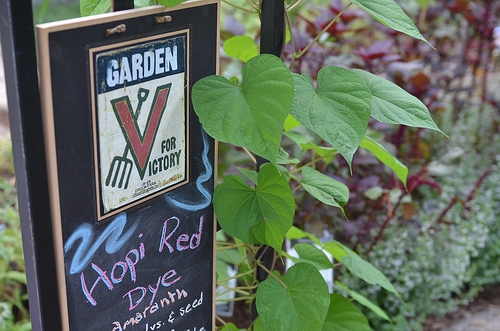
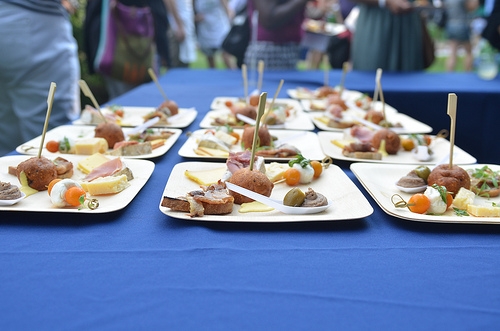
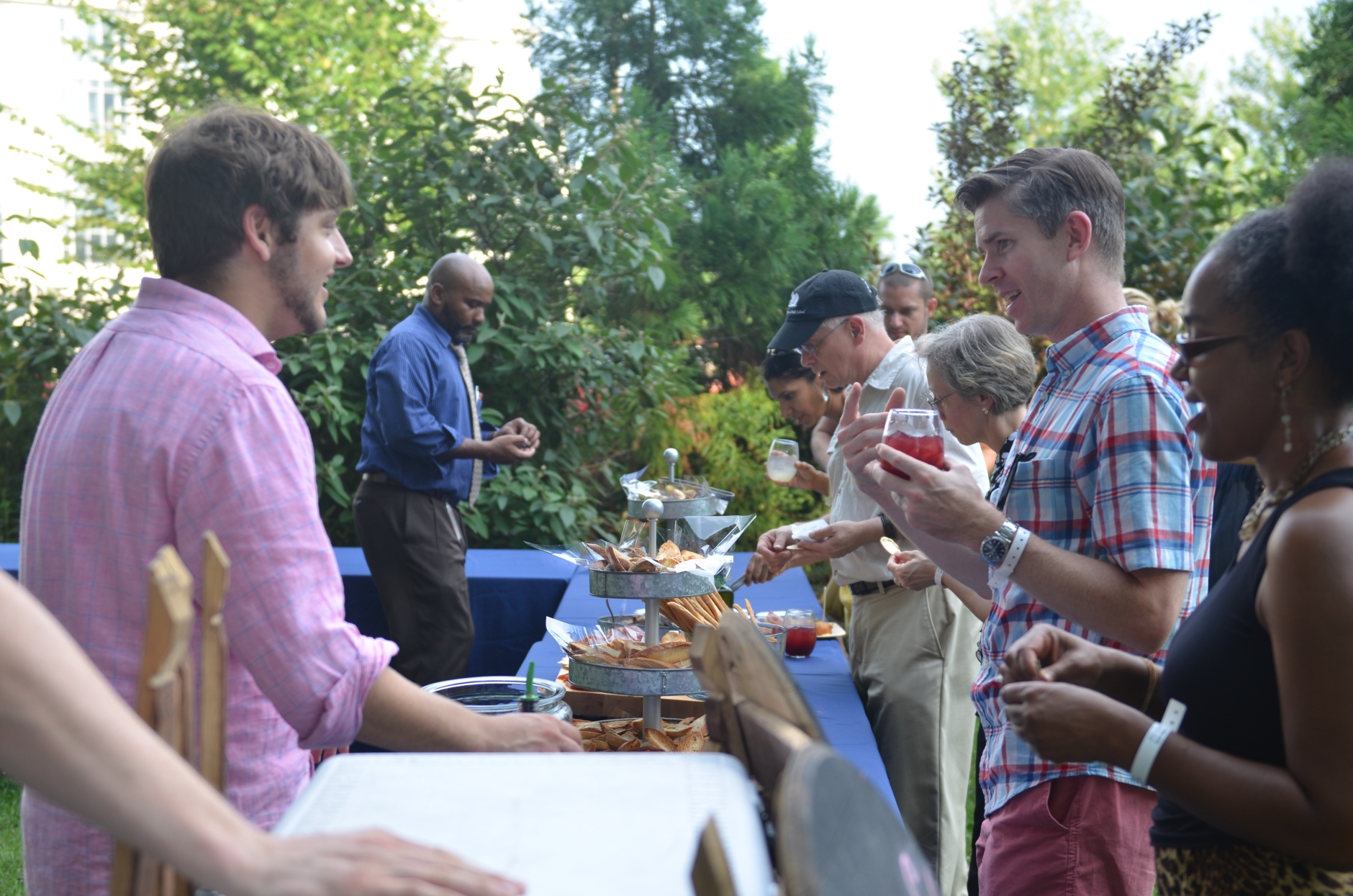
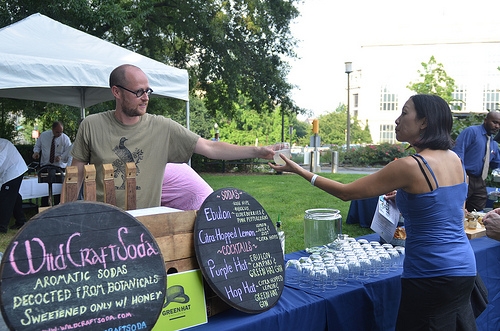
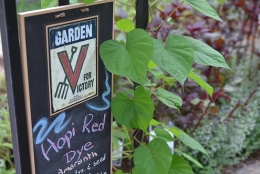
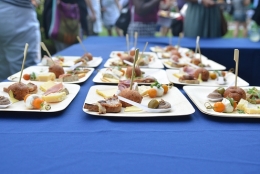
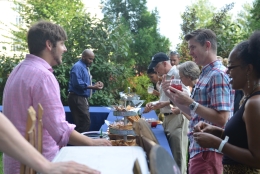
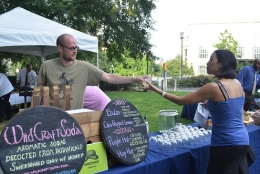
WASHINGTON – Hibiscus and orchid cupcakes, fried green tomato sandwiches and cucumber cups with shrimp ceviche. These are all the edible ways in which the National Museum of American History is celebrating food with the public this summer.
From how we grow it to how we eat it, food is undoubtedly a part of the American experience — an experience so important that it’s an ongoing exhibit at the National Museum of American History.
And this summer, the museum is extending that experience into its garden. Food in the Garden is a five-event, five-week series in the museum’s Victory Garden. The theme for this year’s series is “growing local,” and it’s attracting close to 150 people each week.
“It’s for people who wish to come and discuss a lot of topics related to growing your own food,” says Paula Johnson, a curator at the National Museum of American History.
Everything from the meaning of heirlooms, to foraging for your own food is being discussed by farmers, educators and researchers at the series’ panels. In addition to a discussion, guests get an opportunity to taste the fruits of the local labor with cocktails and dinner in the garden.
“It’s a place where people can go after work on a summer evening to learn about something that’s really meaningful to them and to do it in a really social environment,” says Susan Evans, program director of the American Food History project at the National Museum of American History.
Johnson explains that the series, which is an extension of the museum’s exhibit, FOOD: Transforming the American Table 1950-2000, is a way to bring some of the themes from the exhibition to a larger audience.
Now in its third week, the Aug. 1 Food in the garden event will focus on local city and schoolyard farms.
“We’re really targeting local organizations that are partnering with school groups and with communities to talk broadly about where food comes from and to encourage people to grow their own food. And we’ll be talking about what kind of difference that can make in your community,” Evans says.
And while Johnson says the museum would love to have programs targeted toward a broad audience, this particular series is focused on adults, due to the dinner and cocktail nature of the event.
“What we’ve really been enjoying is to see so many different kinds of people come to the garden — some of our loyal supporters and a lot of new people who are discovering the museum and the Victory Garden on their own,” Johnson says.
On the calendar for the Aug. 15 event is a birthday party for Julia Child.
“Julia is the introductory experience to this larger exploration of some of the ways in which our food has changed in the post-war period,” says Johnson, who adds that Julia Child’s kitchen is one of the most popular exhibits at all of the Smithsonian museums.
While Aug. 15’s dinner and discussion is the last event in the Food in the Garden series, Johnson and Evans say they are working on plans for upcoming series, including events to celebrate the 50th anniversary of the museum, which opened in 1964.
“We will be doing something in the garden around, you know, how things have changed in America in the past 50 years and how food and growing our food has been part of that story,” Evans says. “We really see this series as part of a broader effort that we’ll be embarking on in the upcoming years to really talk to our audiences about these big topics of food and what it means to be American and how we understand our own experiences through what we eat.”
Food in the Garden at the National Museum of American History takes place on Thursdays from 6 p.m. to 8 p.m. through Aug 15. Each event is $20 and includes two cocktails and dinner.
Follow @WTOP and @WTOPliving on Twitter.







